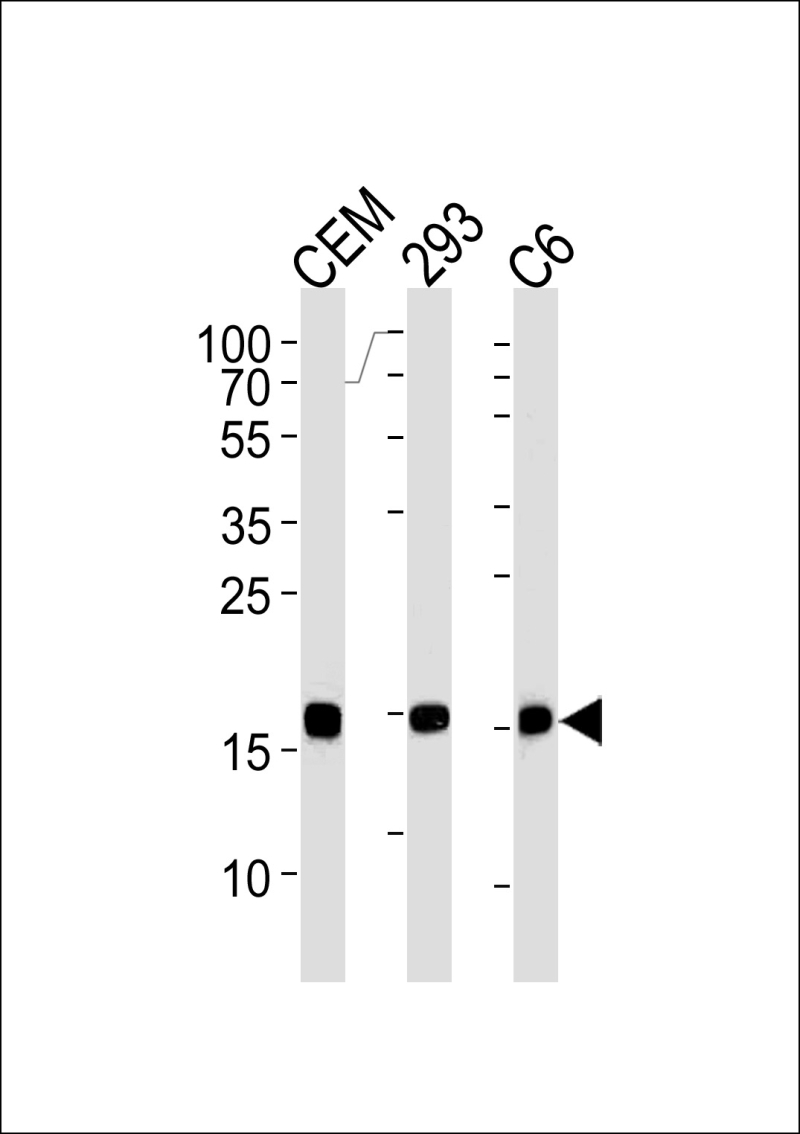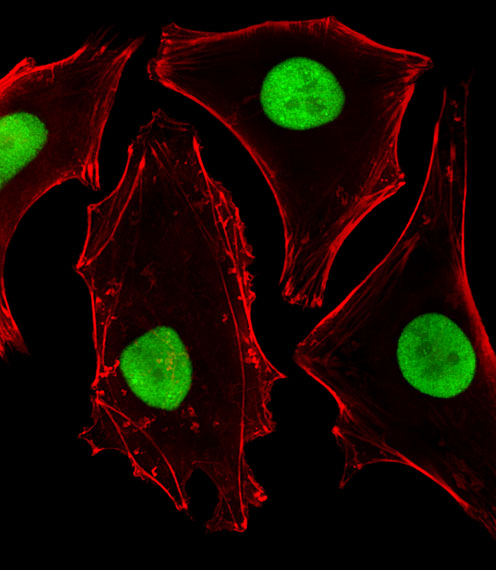

| WB | 1/1000 | Human,Mouse,Rat |
| IF | 咨询技术 | Human,Mouse,Rat |
| IHC | 咨询技术 | Human,Mouse,Rat |
| ICC | 1/25 | Human,Mouse,Rat |
| FCM | 咨询技术 | Human,Mouse,Rat |
| Elisa | 咨询技术 | Human,Mouse,Rat |
| Aliases | Small ubiquitin-related modifier 2, SUMO-2, HSMT3, SMT3 homolog 2 {ECO:0000312|HGNC:HGNC:11125}, SUMO-3, Sentrin-2, Ubiquitin-like protein SMT3B, Smt3B, SUMO2 (HGNC:11125) |
| Entrez GeneID | 6613 |
| WB Predicted band size | 10.9kDa |
| Host/Isotype | Mouse IgG2b |
| Antibody Type | Primary antibody |
| Storage | Store at 4°C short term. Aliquot and store at -20°C long term. Avoid freeze/thaw cycles. |
| Species Reactivity | Human, Rat |
| Immunogen | Purified His-tagged SUMO2 protein was used to produced this monoclonal antibody. |
| Formulation | Purified antibody in TBS with 0.05% sodium azide. |
+ +
以下是关于SUMO2抗体的3篇参考文献示例(内容基于典型研究主题,具体作者及年份为虚构示例):
---
1. **文献名称**: *"Development and Characterization of a Highly Specific SUMO2 Antibody for Detecting Endogenous SUMOylation"*
**作者**: Smith A, et al.
**摘要**: 本研究开发了一种针对SUMO2蛋白的高特异性单克隆抗体,验证了其在免疫印迹(WB)和免疫荧光(IF)中的有效性。该抗体成功区分了SUMO1和SUMO2/3修饰,并应用于检测细胞在应激条件下(如热休克)SUMO2修饰的动态变化。
2. **文献名称**: *"SUMO2 Conjugation in DNA Damage Response: Insights from Antibody-Based Proteomic Analysis"*
**作者**: Lee B, et al.
**摘要**: 利用SUMO2特异性抗体,本研究揭示了SUMO2修饰在DNA损伤修复中的关键作用。通过免疫共沉淀(Co-IP)和质谱分析,作者鉴定出多个DNA修复蛋白(如BRCA1)在电离辐射后发生SUMO2修饰,提示其调控基因组稳定性。
3. **文献名称**: *"SUMO2 Antibody Reveals Stress-Induced Poly-SUMO Chain Formation in Neurodegenerative Models"*
**作者**: Chen C, et al.
**摘要**: 该研究应用SUMO2抗体探讨了神经元在氧化应激下SUMO2链式聚合的机制。研究发现,SUMO2多聚化与蛋白酶体降解途径相关联,并提示其在阿尔茨海默病模型中异常积累,为神经退行性疾病提供了新的分子机制解释。
---
注:以上文献为示例性内容,实际文献需通过PubMed、Google Scholar等平台检索关键词“SUMO2 antibody”或“SUMO2-specific antibody”获取。
SUMO2 (Small Ubiquitin-like Modifier 2) is a member of the SUMO protein family, which plays a critical role in post-translational modification (SUMOylation) to regulate diverse cellular processes, including nuclear transport, transcriptional regulation, stress response, and protein stability. Unlike ubiquitination, SUMOylation typically modulates protein interactions or localization rather than marking targets for degradation. SUMO2 shares ~50% sequence identity with SUMO1 but exhibits higher similarity to SUMO3. forming functionally distinct poly-SUMO chains under stress conditions. Its dynamic conjugation to substrates is reversible and tightly regulated by SUMO-specific proteases.
SUMO2 antibodies are essential tools for detecting SUMO2-conjugated proteins or studying SUMOylation dynamics in research. These antibodies are designed to recognize specific epitopes within SUMO2. often distinguishing it from other SUMO paralogs (SUMO1/SUMO3), though cross-reactivity may occur due to structural similarities. They are widely used in techniques like Western blotting, immunofluorescence, and immunoprecipitation to investigate SUMO2’s involvement in cellular stress responses, DNA repair, and diseases such as cancer or neurodegeneration. Some antibodies target free SUMO2. while others detect SUMO2 conjugated to substrates. Researchers must validate antibody specificity using appropriate controls (e.g., SUMO2 knockout cells or competing peptides) due to potential cross-reactivity. Commercial SUMO2 antibodies are available from multiple suppliers (e.g., CST, Abcam), often produced in rabbits or mice with defined clonal or polyclonal profiles. Their applications extend to drug discovery, particularly in targeting SUMOylation pathways implicated in disease mechanisms.
×